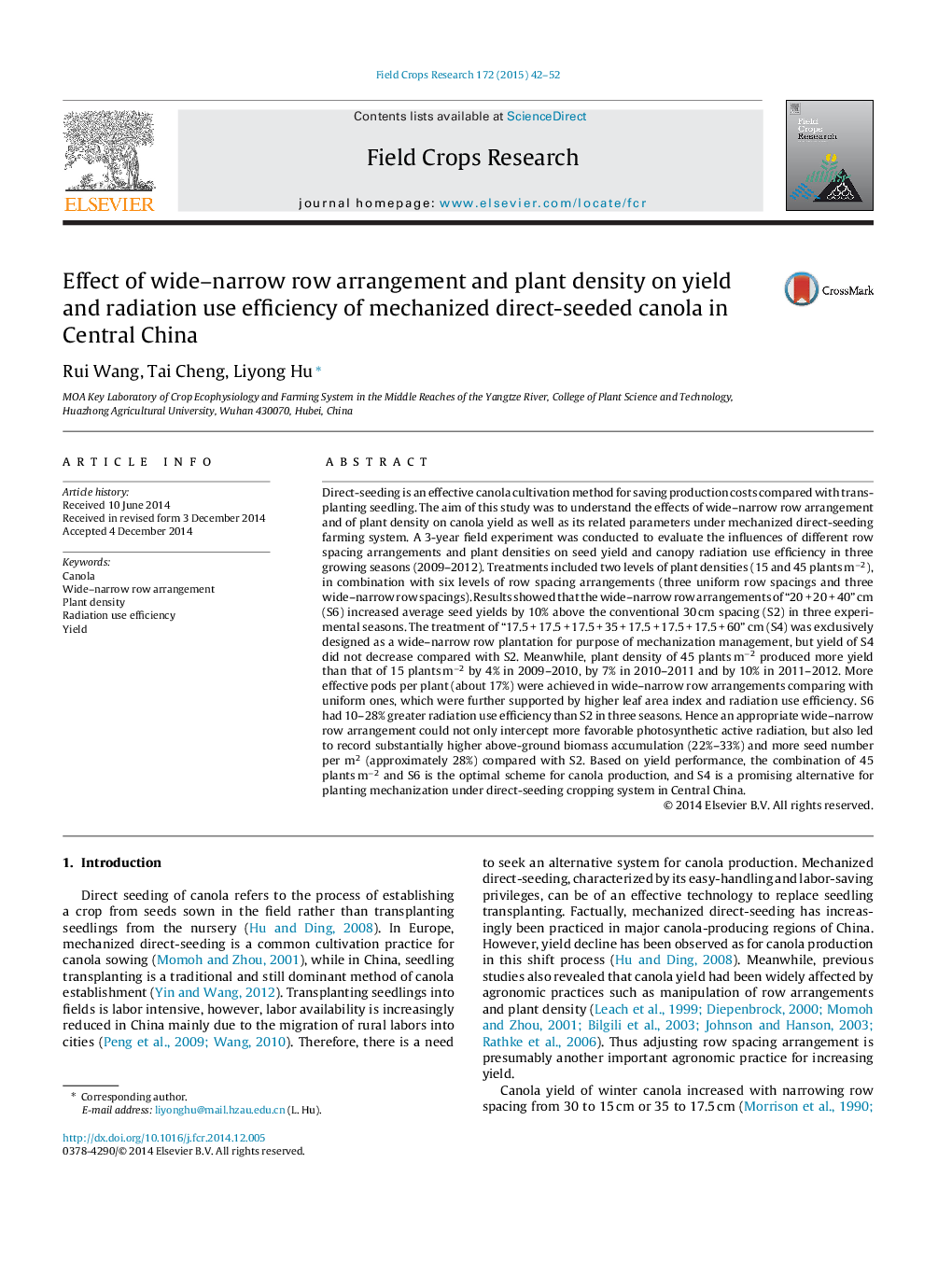| کد مقاله | کد نشریه | سال انتشار | مقاله انگلیسی | نسخه تمام متن |
|---|---|---|---|---|
| 6374984 | 1624691 | 2015 | 11 صفحه PDF | دانلود رایگان |
عنوان انگلیسی مقاله ISI
Effect of wide-narrow row arrangement and plant density on yield and radiation use efficiency of mechanized direct-seeded canola in Central China
ترجمه فارسی عنوان
اثر تنظیم ردیف باریک و تراکم بوته بر عملکرد و بهره وری استفاده از راکتیو مکانیکی مستقر بذر در چین مرکزی
دانلود مقاله + سفارش ترجمه
دانلود مقاله ISI انگلیسی
رایگان برای ایرانیان
کلمات کلیدی
موضوعات مرتبط
علوم زیستی و بیوفناوری
علوم کشاورزی و بیولوژیک
علوم زراعت و اصلاح نباتات
چکیده انگلیسی
Direct-seeding is an effective canola cultivation method for saving production costs compared with transplanting seedling. The aim of this study was to understand the effects of wide-narrow row arrangement and of plant density on canola yield as well as its related parameters under mechanized direct-seeding farming system. A 3-year field experiment was conducted to evaluate the influences of different row spacing arrangements and plant densities on seed yield and canopy radiation use efficiency in three growing seasons (2009-2012). Treatments included two levels of plant densities (15 and 45 plants mâ2), in combination with six levels of row spacing arrangements (three uniform row spacings and three wide-narrow row spacings). Results showed that the wide-narrow row arrangements of “20 + 20 + 40” cm (S6) increased average seed yields by 10% above the conventional 30 cm spacing (S2) in three experimental seasons. The treatment of “17.5 + 17.5 + 17.5 + 35 + 17.5 + 17.5 + 17.5 + 60” cm (S4) was exclusively designed as a wide-narrow row plantation for purpose of mechanization management, but yield of S4 did not decrease compared with S2. Meanwhile, plant density of 45 plants mâ2 produced more yield than that of 15 plants mâ2 by 4% in 2009-2010, by 7% in 2010-2011 and by 10% in 2011-2012. More effective pods per plant (about 17%) were achieved in wide-narrow row arrangements comparing with uniform ones, which were further supported by higher leaf area index and radiation use efficiency. S6 had 10-28% greater radiation use efficiency than S2 in three seasons. Hence an appropriate wide-narrow row arrangement could not only intercept more favorable photosynthetic active radiation, but also led to record substantially higher above-ground biomass accumulation (22%-33%) and more seed number per m2 (approximately 28%) compared with S2. Based on yield performance, the combination of 45 plants mâ2 and S6 is the optimal scheme for canola production, and S4 is a promising alternative for planting mechanization under direct-seeding cropping system in Central China.
ناشر
Database: Elsevier - ScienceDirect (ساینس دایرکت)
Journal: Field Crops Research - Volume 172, 15 February 2015, Pages 42-52
Journal: Field Crops Research - Volume 172, 15 February 2015, Pages 42-52
نویسندگان
Rui Wang, Tai Cheng, Liyong Hu,
